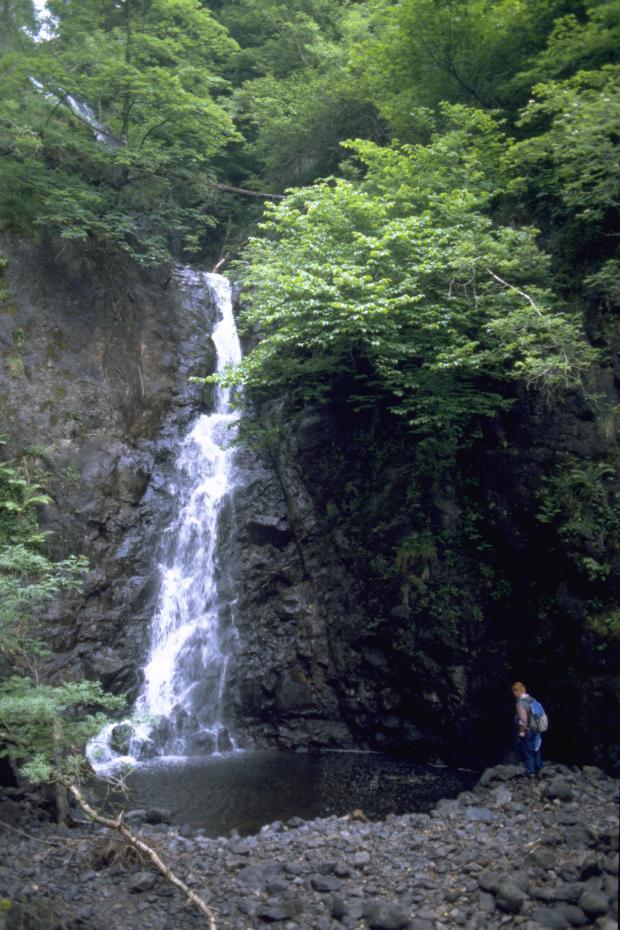
Black Burn ASSI is the only known extensive, active cave system developed in the Cretaceous age Ulster White Limestones in Northern Ireland. It is probably the most extensive karst drainage system that includes open passage developed within Cretaceous limestone in the British Isles. This active river cave system was discovered in 1984 and, to date, nearly 400m of passage has been explored and a number of entrances have been identified.
The cave system is associated with the Black Burn which drains off the east facing scarp of the Garron plateau. In normal conditions the stream sinks at the base of a 25m high waterfall, the contact between the Antrim Basalts and limestone. The entrance to Black Burn cave lies to the east of the waterfall and is active only in high water conditions. During floods the cave system is too immature to allow all the water to sink at this site and Black Burn carries a stream to the coast.
A number of notable invertebrate species have been recorded within the cave. A specimen of the ground beetle, Trechus fulvus, is the first cave dwelling record of this species in Northern Ireland and a blind specimen of the Collembolan, Anurida thalassophila, is the first cave record of this species in Ireland.
Related articles
- ASSI Guidance for Public Bodies/Competent Authorities
- Coastal Areas of Special Scientific Interest
- Conservation Management Plans (CMPs)
- European Marine Sites - Marine Special Areas of Conservation and Special Protection Areas
- Introduction to Conservation Management Plans (CMPs) for Northern Ireland’s Special Areas of Conservation
- Marine Conservation Zones
- Marine Protected Areas
- Marine Ramsar sites
- Portrush Coastal Zone
- Special Areas of Conservation
- Special Areas of Conservation for Harbour porpoise
- Special Protection Areas
